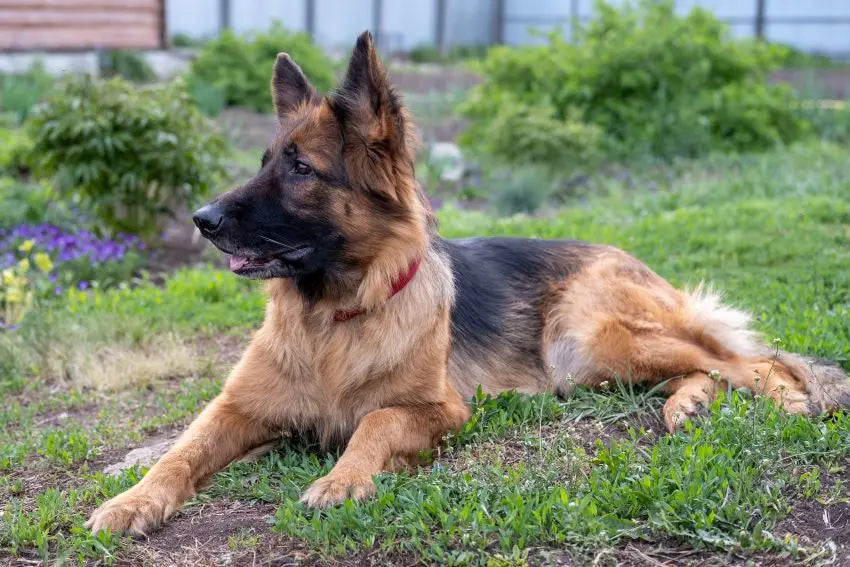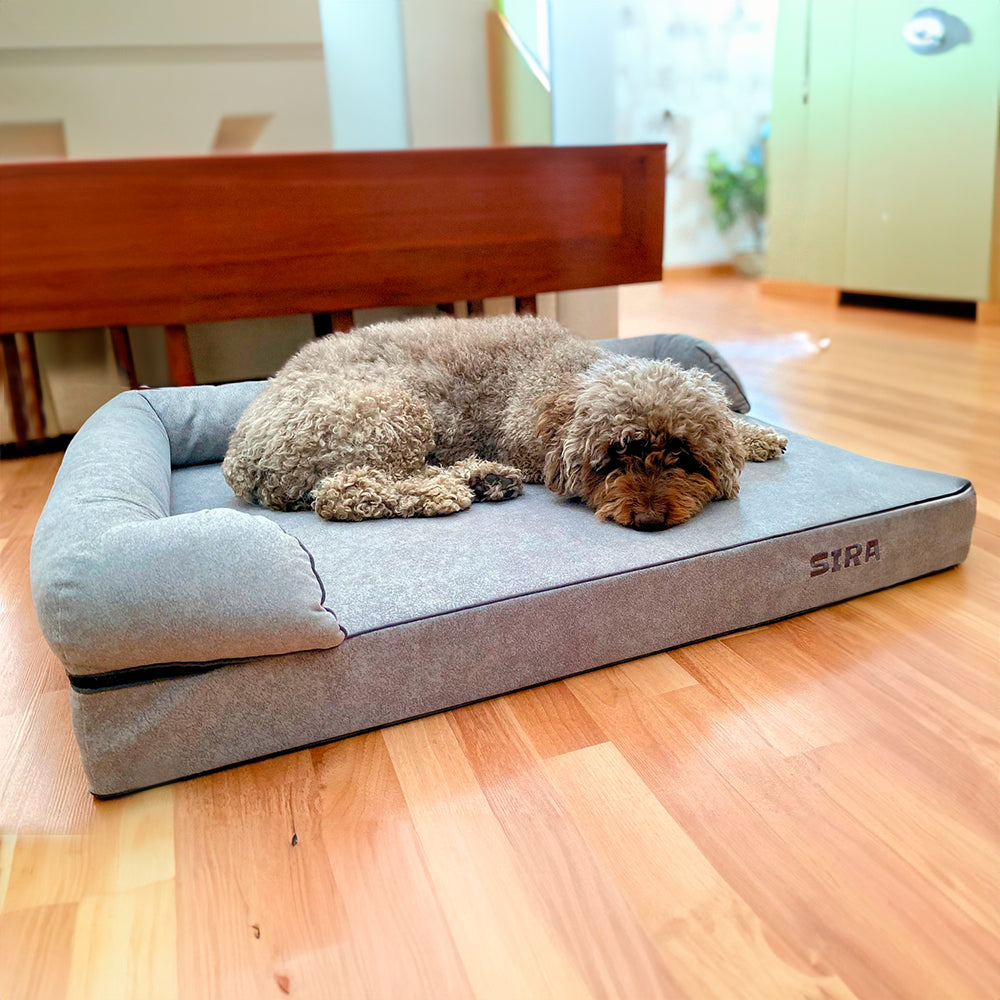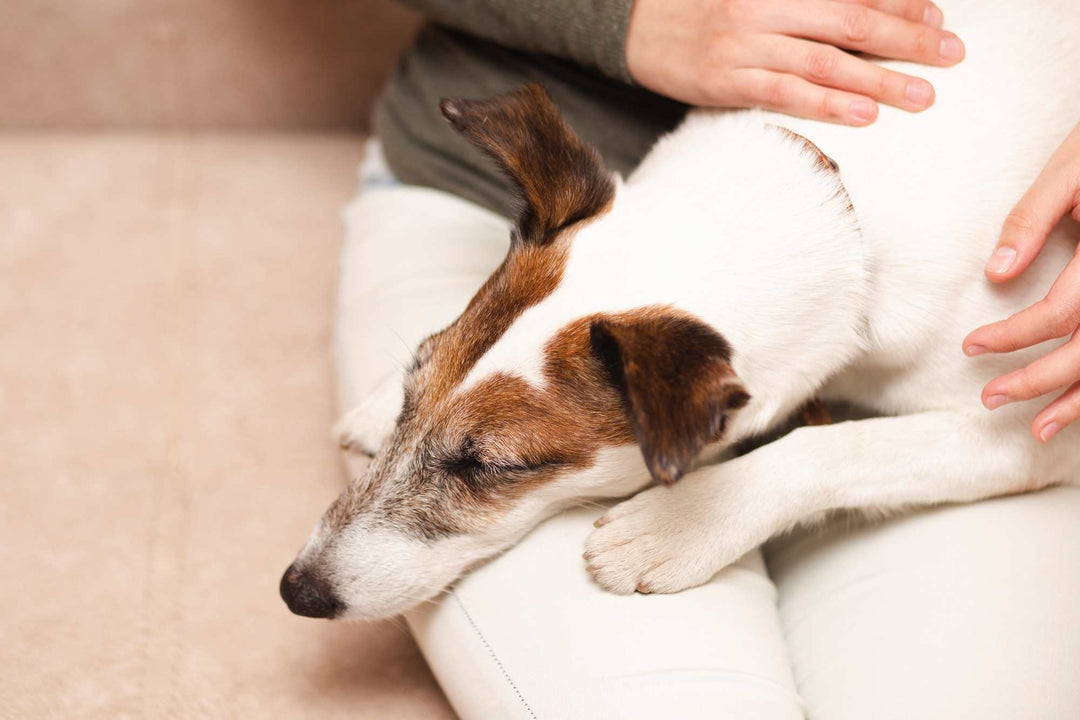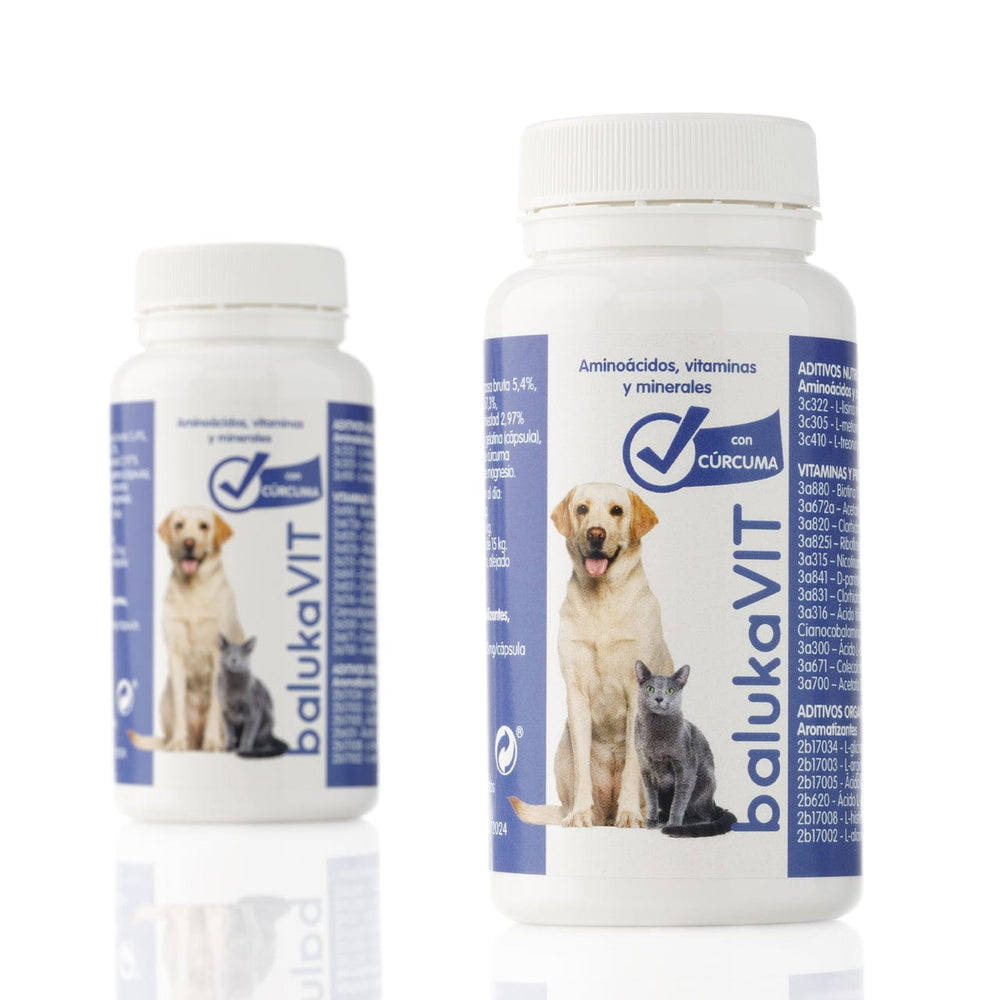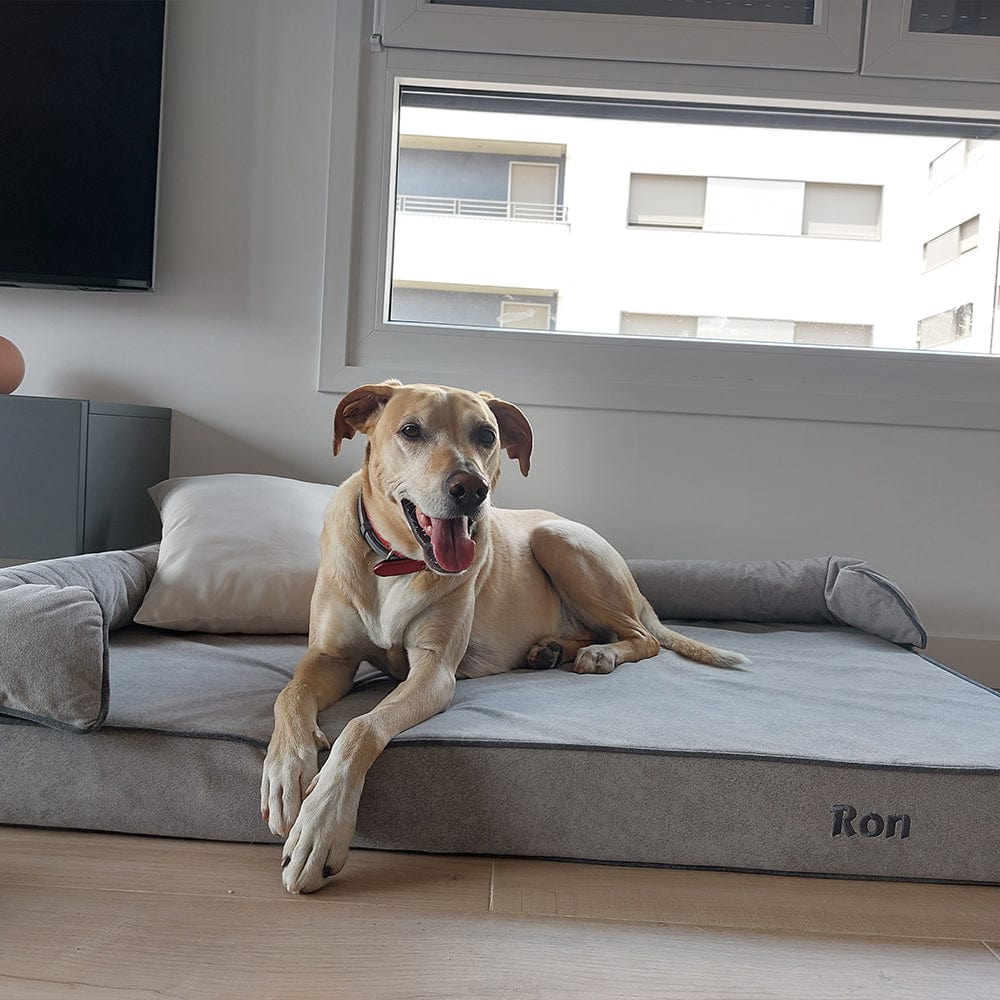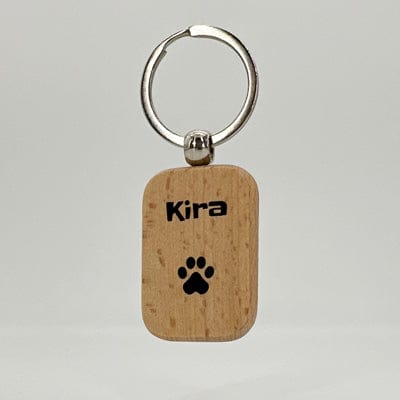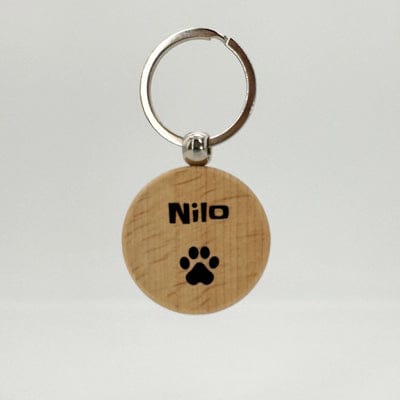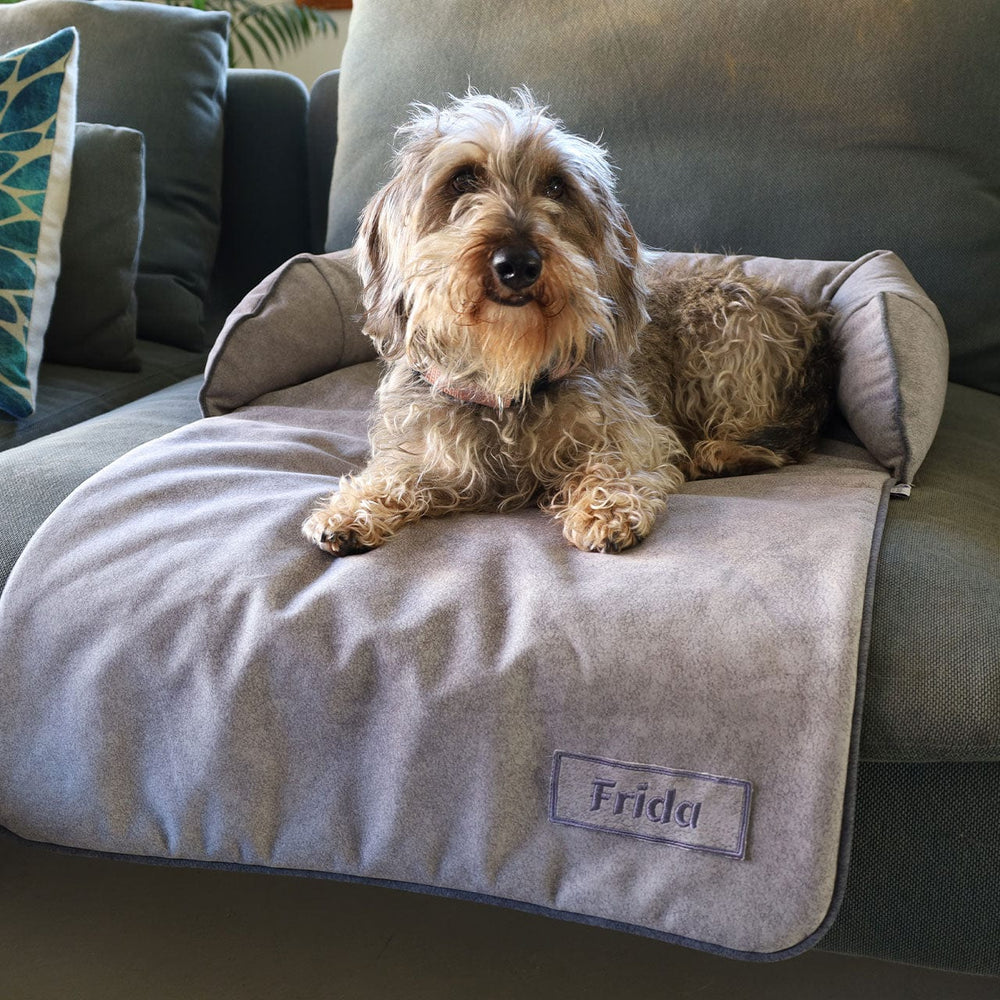Hip dysplasia in dogs is a very common problem, especially in certain breeds such as the German shepherd, the Saint Bernard, the rottweiler, the bulldog (English and French), the Labrador, and the golden retriever . It consists of excessive laxity in the hip joint, which causes problems when walking and quite intense pain. Let's see how canine hip dysplasia is detected and what is the best care for a dog with dysplasia.
How to detect canine hip dysplasia
Hip dysplasia will make your dog inevitably be reluctant to move. The pain caused by this abnormality in the hip joint will cause a visible limp , and an almost systematic refusal to get up and jump.
In addition to this logical reduction in mobility, you will notice that your dog tends to carry its weight on its front legs , so that it will give the sensation of dragging the hind legs without actually supporting them (without doing the complete game of supporting and flexing).
Generally, dogs with hip dysplasia are divided into two large groups ( depending on symptom cluster):
- Young dogs without arthritis and with significant hip laxity.
- Adult dogs whose hip arthritis has been caused by dysplasia.
Our Memory Foam Dog Beds

He has his name embroidered on him

Take care of his bones

The best for dogs with dysplasia or osteoarthritis
Can it be avoided?
Unfortunately, there is no way to avoid the onset of hip dysplasia, and it can only be detected early to slow the deterioration of the joint with some recommended practices (which we will see in the next section).
So In general, we will know if our dog has dysplasia by doing a hip x-ray which, combined with specific palpation methods by the veterinarian, will establish the degree of joint laxity (which, in turn, will determine the severity). of dysplasia).
It is best to perform this examination when the dog is younger (before the age of 1, at the latest). These methods usually give a very accurate prediction about the prognosis of hip dysplasia, including the possible surgical operations that the animal will have to undergo in order to alleviate the development of the disease.
Care and treatments for dogs with dysplasia
Veterinary follow-up and surgical treatments
The main treatment of hip dysplasia in dogs will have to be prescribed by a veterinarian, as a result of examinations and tests during the first year of life of the dog. animal. The goal will always be to reduce cartilage damage as much as possible.
Puppies between the ages of 10 and 18 months can already be diagnosed and surgically treated to correct dysplasia. The operation does not entail great risks and manages to significantly alleviate the pain in the hip, although it is advisable that the dog does not perform vigorous physical exercise (and much less without the leash).
Relief of mild symptoms
When the symptoms of dysplasia still allow your dog some freedom of movement, it is very likely that you will have to administer drugs to control the pain , and that will be enough ( at the moment).
There is something very important, and it is controlling your dog's overweight.Take great care of your diet and do not allow it to gain weight, as this will increase the symptoms and accelerate cartilage degeneration
In this sense, we recommend the Baluka vitamin complex (balukaVIT ), a nutritional supplement based on turmeric, a natural anti-inflammatory, whose intake will relieve the pain that your dog suffers as a result of dysplasia.
Natural Anti-inflammatory for Dogs and Cats

A plus of VITALITY

Ideal for dogs and cats with arthritis, osteoarthritis or hip dysplasia.

Turmeric as a natural anti-inflammatory
Relief of serious symptoms
Once the dysplasia has advanced it will be impossible to stop it, even if you have taken all the measures preventive measures that have been in your hand. However, you will have managed to improve your best friend's quality of life before joint degeneration impairs his abilities forever.
Going forward, the best thing you can do for your pet is to provide him with a place comfortable for your rest, such as the viscoelastic bed balukaDREAM by Baluka, designed to adapt to the shapes of the animal's body, and with a rigidity (not at odds with its ergonomics ) specially designed to cushion and distribute weight, and thus promote rest.
Another measure that will help your dog in these last stages of dysplasia is rehabilitation. The physiotherapy treatments will allow him to strengthen his muscle mass and correct compensatory postures. As long as the muscles can support its skeleton, pain will be reduced and wear and tear on the joint will be attenuated.
Despite its almost irreversible nature, hip dysplasia in dogs It has a very favorable prognosis if it has been detected during the first months of the puppy's life. From now on, surgical treatments, rehabilitation, rest and the comforts of home will be the best allies to cushion joint degeneration and delay the consequences on your health as much as possible.
